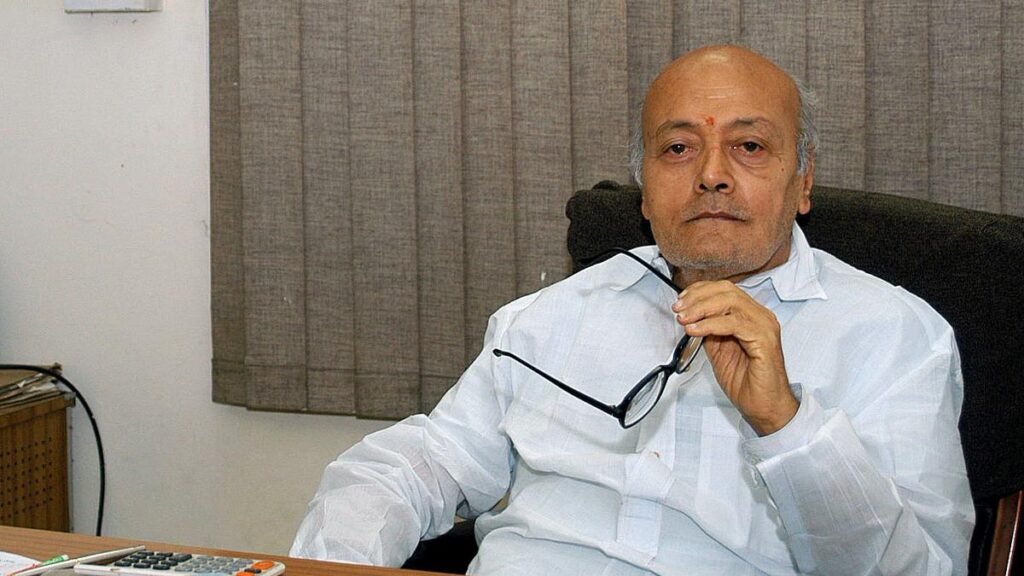When the March 29, 1987 issue of the popular Tamil magazine Ananda Vikatan hit the stands two days earlier, it created a stir in Tamil Nadu. On its cover page was a cartoon showing the dais of a public meeting. In the forefront, two persons were shown seated prominently in front of the mike. Behind them were two others seated less prominently with a police constable standing in between. The caption read: “Of the two persons on the stage, who is the MLA and who is the Minister?” The response was: “The person who looks like a pick-pocket is the MLA and the person who looks like a masked dacoit is the Minister…!”
‘MLAs ridiculed’
The Assembly was in session. On March 28, N.S.V. Chitthan, a legislator, flagged the cartoon in the House alleging that it ridiculed the members of the legislature by describing them as anti-social elements. Speaker P.H. Pandian condemned the cartoon and said it was derogatory and calculated to damage the reputation of the legislators in general and the Ministers in particular. Holding that the reputation of the MLAs had been injured by the cartoon, he ordered Ananda Vikatan to publish a front page apology, failing which summary sentence would be passed in the House. He also communicated this to S. Balasubramanian, the Editor of the magazine.
Balasubramanian sent to the Speaker a copy of an article on the subject to be published in the next issue of the magazine dated April 5, 1987. The article said the caricature was an offenceless joke with no one in mind. Besides, the Minister or the MLA referred to need not be taken as belonging particularly to Tamil Nadu. Be it Rajiv or Reagan, in cartoons or titbits, they would be shown to converse only in Tamil in a Tamil magazine, it said.
Two alternatives
Balasubramanian also expressed surprise at the Speaker instantly delivering a judgment finding him guilty of an offence against the House and threatening him with the punishment without an opportunity to explain the charge proposed to be levelled against him. He said he was given only two alternatives: apologise by accepting the offence or be punished without an inquiry or adjudication. He pointed out that in cases of breach of privilege, the Assembly should decide by means of a resolution and the Speaker should not unilaterally impose punishments.
Later, the Speaker ruled that since Balasubramanian failed to apologise, he had committed a breach of privilege of the House, and therefore he must be arrested and detained in the Central Prison for three months to undergo rigorous imprisonment. The House passed the resolution, with some members walking out. Balasubramanian was arrested at his farmhouse at Padappai and jailed on April 4. His wife moved the Supreme Court challenging his detention, and a Special Bench was constituted. Meanwhile, Pandian said that at the request of Chief Minister M.G. Ramachandran, in exercise of the residuary powers conferred on the Speaker by the House, he was ordering the release of Balasubramanian. He walked out of jail on April 6. Consequently, the Supreme Court closed the proceedings in the matter.
The victor: The Editor, S. Balasubramanian, later framed a photocopy of the cheque, the two ₹500 currency notes from its encashment, and two newspaper clippings on the issue, and kept the collage as a memento in his farmhouse.
| Photo Credit:
file photo
Petitions before High Court
However, upon his release, Balasubramanian filed two writ petitions before the Madras High Court. One sought to declare the House resolution punishing him as unconstitutional, null and void, illegal, and unenforceable. The second sought a direction to the respondents, including the Speaker, to compensate him for the flagrant violation of his fundamental rights.
A Full Bench heard the case and delivered its verdict on September 28, 1994. The court held that the record of events, as transpired in the House, only confirmed Balasubramanian’s plea that his alleged guilt was decided and pronounced by the Speaker himself. The Speaker had, in fact, made a declaration to that effect, even before any opportunity to show-cause was given to the Editor.
“The proceedings dated 4.4.1987 of the House by means of a resolution, to which a reference has already been made, do not have the consequence of rectifying the serious lapse, or redeem the action taken to punish the petitioner by detaining him in prison, of the patent illegalities committed at every stage. Suo motu the Speaker has power only to refer the question to the privileges committee and not to record a verdict on the very question. The Residuary Powers of the Speaker also will not come to his rescue in the teeth of any provision in the Constitution or the Rules themselves and, that too, in the matter of detailed working of the Rules and not otherwise,” Justice Raju wrote, authoring the verdict.
Question of breach skipped
Consequently, the court felt that it was not necessary to consider the question as to whether the cartoon was in breach of the privilege of the House. “In the light of our declaration that the indictment as well as imposition of sentence on the petitioner and consequential arrest and his detention in the Central Prison from 4.4.1987 till he was released on 6.4.1987 was unconstitutional and void in law, the petitioner is entitled to redress in the shape of ‘monetary amends’ under the Public Law for the wrong done to the citizen,” the court said.
Since Balasubramanian did not claim any particular sum as compensation, the court said, “We consider it sufficient to award a sum of Rs 1,000 as a notional or token compensation by way of ‘monetary amends’ to the breach of the fundamental rights of the petitioner in vindication of his stand.” Balasubramanian later framed a photocopy of the cheque, the two ₹500 currency notes from its encashment, and two newspaper clippings on the issue, and kept the collage as a memento in his farmhouse.
Published – February 18, 2025 10:10 pm IST
Source:https://www.thehindu.com/news/national/tamil-nadu/a-cartoon-that-landed-the-editor-of-ananda-vikatan-in-jail-38-years-ago/article69233467.ece

